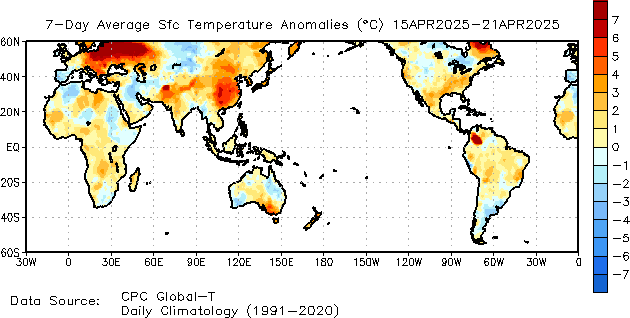 Paul Gilding more than often has some interesting and provocative insights. In Cockatoo Chronicle number 24 Paul discusses whether or not coal is the terrific investment opportunity after all. This and the recent study published in the internationally respected magazine Nature, which highlighted the instability of future coal prices due to over-estimates of the availability of coal worldwide, should have people and organisations starting to wonder whether investing in coal mining is a great idea after all.
Paul Gilding more than often has some interesting and provocative insights. In Cockatoo Chronicle number 24 Paul discusses whether or not coal is the terrific investment opportunity after all. This and the recent study published in the internationally respected magazine Nature, which highlighted the instability of future coal prices due to over-estimates of the availability of coal worldwide, should have people and organisations starting to wonder whether investing in coal mining is a great idea after all.
By Paul Gilding | November 18th, 2010 | From: Cockatoo Chronicles
The very conservative International Energy Agency has just released its closely watched annual World Energy Outlook (WEO), with forecasts for the structure of the energy market through to 2035. This year’s WEO was much anticipated, given the pace of developments in renewables and climate policy, and it didn’t disappoint. The report included the IEA’s interpretation of what major governments’ commitment to a 2°C temperature target would mean for the energy market. The contrast with what most market players assume, particularly coal companies, could hardly be more dramatic.
One global coal player, Peabody, recently told the World Coal Conference that it assumes demand for coal will increase by over 50 per cent by 2030. The IEA on the other hand tells us that if we are to have a reasonable chance of limiting warming to 2°C degrees, coal demand will have to peak by 2020, and by 2035 will have dropped to levels last seen in 2003. These are dramatically different views of the market and the implications for company valuations, and therefore for investors and corporate strategy, are considerable.
The same IEA report compares coal and oil’s current 46 per cent share of global electricity generation to what it would be in 2030 under the 2°C degree scenario. The answer is just 22 per cent. The difference would be picked up by low CO2 energy, nuclear and renewables, which would see massive growth. They assume non-hydro renewables would go from 3 per cent to 20 per cent, all the more remarkable given the assumed increase in overall energy demand. Interestingly, despite significant demand growth, even the total amount of coal-generated electricity would fall in absolute terms.
The significant thing about these forecasts is that the IEA has generally been considered to be excessively conservative and largely aligned with the views that dominate the fossil fuel industry. Indeed, the Peabody forecasts referred to above reference an earlier IEA WEO report. So what’s going on when this industry friendly body chooses to prick the coal bubble? And what does it all mean for investors and resource companies?
What it means is the coal industry is headed for a crash. This is heresy in the industry and would be dismissed by some as starry-eyed naivety. But the numbers don’t lie and this issue has cold hard rational numbers all over it.
One of these numbers is 2°C. There are many uncertainties in the detail of climate science, but there is clear consensus on that number. It is the line in the sand scientists have drawn and said, if we go past it we face catastrophic system-wide risk. While some scientists argue that number is too high and too risky, none of any consequence argue it is too low. That’s why the governments of China, India, Europe and the USA have all agreed, along with many global corporates, that 2°C is the line we can’t cross.
Not crossing it requires the numbers in the IEA report to be achieved. This is hard science. If you put any more CO2 in the atmosphere than that, we will almost certainly be heading past 3-4°C. The economic consequences of that would make the collapse of the coal industry look like a picnic. The science also tells us, supported now by the IEA, that the decision will be made this decade, by action or lack of it.
Further complicating assumptions of growth is a very interesting analysis published today in Nature by two well regarded US energy experts, Richard Heinberg and David Fridley. Their article, “The End of Cheap Coal,” calls into question assumptions of endless supplies of cheap coal, using much of the same logic as earlier predictions around the end of cheap oil. It’s worth remembering that those who have been predicting the end of cheap oil since the late 90s, including Heinberg, were ridiculed for many years.
Now even the IEA supports that view with comments like “the age of cheap oil is over.” The new analysis in Nature suggests there may be a similar dynamic at play with coal, with reserves constantly being revised downwards as time passes. They also remind us that industry has a history of getting their forecasts wrong, noting that for oil, “the current price of more than $US80 per barrel is about three times higher than the upper range in official forecasts for 2010 that were being issued in the late 1990s.” Like oil, the issue is not any risk of running out, but volatile and rising prices as the peak level of quality supply is reached.
But isn’t this good news for the coal industry? Aren’t rising coal prices good? The answer is surprising – and this is where the two issues combine. In the short term the answer is yes, but ultimately higher prices will trigger the death of coal. Everyone knows the only way coal can survive in the low-carbon world the science demands, is if carbon capture (CCS) technology can make coal a zero CO2 energy source. The economic viability of CCS is already questionable and is rapidly losing support, but if it is ever to work it can only do so with cheap coal.
This is because the additional cost of CCS equipment and CO2 pipelines, along with the inherent loss of efficiency involved in its use, means that if coal prices rise, renewables will become cheaper than coal with CCS. So if Heinberg and Fridley are right, coal prices will increase, CCS will be confirmed as uneconomic and renewables will take over. This, of course, will then see coal prices drop again. But it seems likely, by then, that the market will have shifted its focus to renewables, and perhaps nuclear, with coal unlikely to recover given renewables prices will keep falling.
So why do Peabody and so many others assume levels of growth that are in such contrast to this hard logic of both the market and climate science?
Firstly, of course, because they want it be so. They sell coal and the more they can convince the market of an endless coal boom, the higher their share price. This is particularly so for resource companies that are heavily or exclusively reliant on coal like Peabody. Self-interest is a powerful driver of denial. But it’s more complicated than that.
What these people and their investors are falling for, supported by many people in government, is what I call the “economic inertia trap”. This is the belief that something that is big and moving in a certain direction will continue to do so. They simply can’t imagine the level of change required to shift that inertia could possibly occur. The argument goes: coal is cheap and plentiful, people need lots of energy, so coal will be burnt. This is delusion on a grand scale. Does anyone really believe society will calmly stand by as we head towards 3°C, then 4°C, staring economic and social collapse in the face while we focus on cheap energy as some kind of overriding objective?
Let there be no doubt, we will act on climate change – and when we do, the coal industry will face an almighty crash, as Phil Preston and I argued in our recently released paper on the financial implications of all this. Probably not this year or next, but we think before the end of this decade.
But don’t expect Peabody or their friends to come on board early. Horse and cart companies didn’t become auto companies. Amazon reshaped the book retailing business before book retailers woke up. Kodak failed to be ready for digital photography, and so on. We can safely expect coal companies to stay in denial all the way to the finish line – or in their case, their finished line. That is their choice to make. It is also their investors’ choice on whether to go with them or when to jump. The clock is now ticking.







 Paul Gilding more than often has some interesting and provocative insights. In
Paul Gilding more than often has some interesting and provocative insights. In  Elizabeth Kolbert,
Elizabeth Kolbert, 
